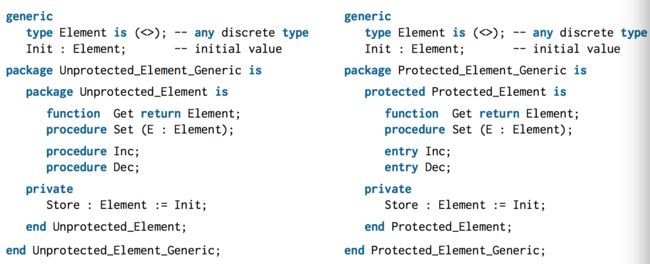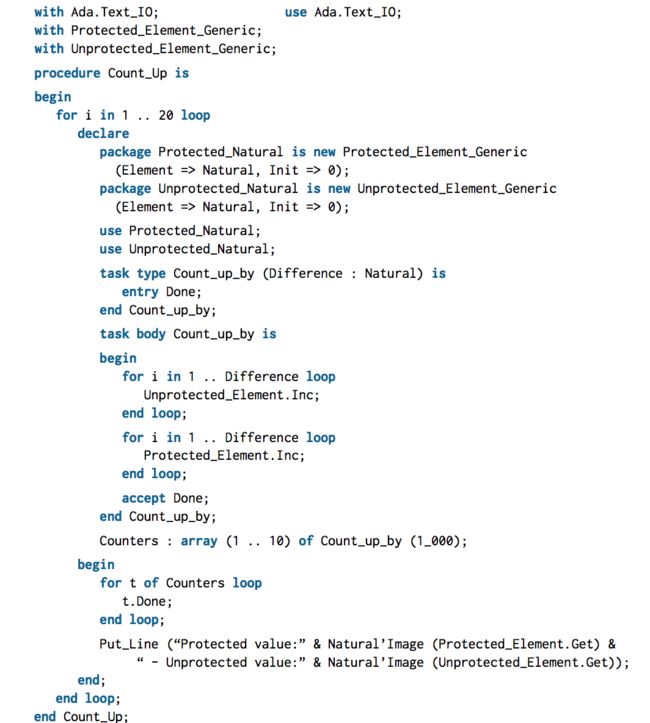- Python个人学习笔记(17):模块(sys、pickle&json)
NEET_LH
樵夫老师Python零基础课程个人学习笔记python学习笔记
五、sys模块sys.exit():退出while1:print(123)sys.exit(0)#程序退出,0是正常退出,1是非正常退出,记录在日志中sys.version:得到当前解释器的运行环境sys.platform:运行平台,win32=windows代码:print(sys.version)print(sys.platform)结果:3.13.0(tags/v3.13.0:60403a5
- python学习笔记之异常(内置标准异常总结)
Molly_DD
Python学习笔记python软件测试
python异常处理机制异常处理是python的一种高级工具,当异常发生时,程序会停止当前的所有工作,跳转到异常处理部分去执行。异常既可以是程序错误引发的,也可以由代码主动触发。异常处理基本结构try:可能引发异常的代码except异常类型名称:异常处理代码else:没有发生异常时执行的代码异常报错:try:classtest:defgetdata(self):returnself.datay=t
- 图像分割技术的应用
不要不开心了
计算机视觉dashpython
今天的内容为:图像分割技术与应用,以下是内容总结1.图像分割概述图像分割是指预测目标的轮廓,将不同的像素划分到不同的类别,属于非常细粒度的分类任务。其应用场景广泛,包括人像抠图、医学组织提取、遥感图像分析、自动驾驶、材料图像分析等。2.图像分割的前景与背景-物体(Things):可数的前景目标,如行人、车辆等。-事物(Stuff):不可数的背景,如天空、草地、路面等。3.图像分割的三层境界-语义分
- stm32第四天控制蜂鸣器
Do vis824
stm32嵌入式硬件单片机
一:1.蜂鸣器的种类蜂鸣器是一种常用的电子发声元器件,采用直流电压供电。广泛应用于计算机,打ED机,报警器,电子玩具,汽车电子设备灯等产品中常见的蜂鸣器可分为有源蜂鸣器和无源蜂鸣器。2.蜂鸣器的控制方式有源蜂鸣器:内部有震荡源,只要通电即可自动发出固定频率的声音。(频率固定无法控制音色)无源蜂鸣器:内部无震荡源,需要外部脉冲信号驱动发声,声音频率可变。(可改变频率来改变音色)3.区分蜂鸣器从外观上
- C语言入门第七天字符串输入输出函数和控制语句
Do vis824
算法c#c语言linux
一:字符串输入输出函数1:字符串输入函数getsa:格式:char*gets(char*s)现在指针不懂的可以直接写成gets(s)b:功能:从键盘输入一以回车结束的字符串放入字符数组中,并自动加'\0',c:输入串长度应小于字符数组维数d:与scanf函数不同,gets函数并不以空格作为字符串输入结束的标志e:代码展示#includeintmain(){chara[5];gets(a);prin
- C++学习note8(结构体)
技术小白Byteman
c++学习开发语言算法visualstudio
一,结构体用法结构体为用户自定义的数据类型,放在主函数前,其定义方法如下:structStudent{stringname;intage;intgrade;};代码示例:#includeusingnamespacestd;#includestructStudent{/此处Student也可为student(不硬性要求大小写)stringname;intage;intgrade;}s3;/在此顺便创
- C++学习note7(指针)
技术小白Byteman
c++学习开发语言windowsvisualstudio算法数据结构
一,指针的定义指针用于记录变量的地址。代码示例:#includeusingnamespacestd;intmain(){inta=0;int*p;(int*为一体)p=&a;p为a的地址coutusingnamespacestd;intmain(){int*p=NULL;*p=100;定义空指针后不可对其进行访问,故程序出错coutusingnamespacestd;intmain(){int*p
- localStorage在上面位置?数据存放文件名是什么?
2301_79698214
htmljava
在上述代码中,数据并不是以传统文件的形式存放在某个具体的文件里,而是存储在浏览器的localStorage中。localStorage是HTML5新增的一个会话存储对象,它用于临时保存同一窗口(或标签页)的数据,在关闭窗口或标签页后数据仍然存在。数据存储位置和文件名存储位置:localStorage是浏览器提供的一个存储机制,数据存储在浏览器的本地存储区域,不同的浏览器存储位置不同,例如:Chro
- 物联网为什么用MQTT不用 HTTP 或 UDP?
工程师焱记
物联网httpudp硬件架构嵌入式硬件开源协议网络
先来两个代码对比,上传温度数据给服务器。MQTT代码示例//MQTT客户端连接到MQTT服务器mqttClient.connect("mqtt://broker.server.com:8883",clientId)//订阅特定主题mqttClient.subscribe("sensor/data",qos=1)//发布消息到主题mqttClient.publish("sensor/data","t
- Can通信流程
逆旅可好
单片机stm32嵌入式硬件
下面给出一个更详细的CAN发送报文的程序流程说明,结合HAL库的使用及代码示例,帮助你了解每一步的具体操作和内部原理。一、系统与外设初始化1.1HAL库初始化在main()函数开头,首先调用HAL库初始化函数:HAL_Init();作用:重置外设、初始化系统定时器,并设置NVIC分组等。细节:这一步保证后续调用HAL库函数时,各个全局变量和中断配置已就绪。1.2系统时钟配置调用时钟配置函数(通常由
- 学习使用 Git 和 GitHub 开发项目的教程推荐
vortex5
学习gitgithub
Git和GitHub是现代软件开发中不可或缺的工具,无论你是个人开发者还是团队成员,掌握它们都能极大提升效率。本文精选了一系列优质教程资源,涵盖从基本Git命令到进阶多人协作的内容。这些教程既有文字形式,也有视频或交互式资源,适合不同学习风格的人。一、为何要学习Git和GitHub?Git是一个分布式版本控制系统,让你追踪代码变更、回滚错误并与他人协作;GitHub则将其扩展为一个云端平台,支持代
- JQ实现异步请求的几种方法
CsharpDev-奶豆哥
开发语言javascript
在jQuery中,实现异步请求(AJAX)有多种方法。以下是几种常见的实现方式及其示例代码。1.$.ajax()方法$.ajax()是jQuery中最通用的AJAX方法,支持高度定制化。示例$.ajax({url:'你的请求地址',//请求URLmethod:'GET',//请求方法dataType:'json',//预期返回的数据类型success:function(response){cons
- 使用Java实现Oracle表结构转换为PostgreSQL的示例方案(AI)
秉承初心
AI创造javaoraclepostgresql
核心代码importjava.sql.*;importjava.util.ArrayList;importjava.util.HashMap;importjava.util.List;importjava.util.Map;publicclassOracleToPGConverter{//类型映射表privatestaticfinalMapTYPE_MAPPING=newHashMapcolumn
- Java并发编程之ReentrantReadWriteLock
Johnny Lnex
Java并发编程java开发语言jvm
基本使用方法创建锁对象首先,通过newReentrantReadWriteLock()创建一个锁实例。获取读锁和写锁使用readLock()方法获得读锁对象,使用writeLock()方法获得写锁对象。使用锁保护共享资源在需要保护的代码块前后分别调用lock()和unlock()方法,确保对共享资源的访问安全。示例代码:importjava.util.concurrent.locks.Reentr
- 解决VMware ESX常见问题:虚拟化故障排除指南
NauClojure
网络虚拟化
VMwareESX是一种广泛使用的虚拟化平台,但在使用过程中可能会遇到一些常见问题。本文将介绍一些常见问题,并提供相应的故障排除指南和示例代码。问题:虚拟机无法启动故障排除:确保主机上的硬件符合VMwareESX的要求,并且已正确安装和配置。检查虚拟机的配置文件是否存在错误。可以使用以下命令检查配置文件的语法:vmware-v/path/to/vm/config.vmx检查主机的存储空间是否足够,
- LeetCode 热题 100_跳跃游戏(78_55_中等_C++)(贪心算法)
Dream it possible!
LeetCode热题100leetcodec++贪心算法算法
LeetCode热题100_跳跃游戏(78_55)题目描述:输入输出样例:题解:解题思路:思路一(贪心算法):代码实现代码实现(思路一(贪心算法)):以思路一为例进行调试题目描述:给你一个非负整数数组nums,你最初位于数组的第一个下标。数组中的每个元素代表你在该位置可以跳跃的最大长度。判断你是否能够到达最后一个下标,如果可以,返回true;否则,返回false。输入输出样例:示例1:输入:num
- springBoot中myBatisPlus的使用
无足鸟丶
springboot后端java
MyBatis-Plus是一个MyBatis的增强工具,在SpringBoot项目里使用它能极大提升开发效率。下面为你详细介绍在SpringBoot中使用MyBatis-Plus的步骤以及示例代码。1.创建SpringBoot项目你可以借助SpringInitializr(https://start.spring.io/)来创建一个新的SpringBoot项目,添加以下依赖:SpringWebSp
- js将元素滚动到可见区域
无足鸟丶
javascript前端开发语言
除了使用scrollIntoView方法之外,还可以使用scrollIntoViewIfNeeded方法作为兼容性更好的替代方法。scrollIntoViewIfNeeded方法在某些情况下会更加平滑地将元素滚动到可见区域,而不会强制滚动到视口的顶部或底部。它的兼容性也比scrollIntoView方法更好。以下是一个示例代码,展示如何使用scrollIntoViewIfNeeded方法将元素滚动
- springBoot中不添加依赖 , 手动生成一个token ,并校验token (使用简单 , 但是安全会低一点)
无足鸟丶
springboot安全后端
在SpringBoot里,即便不添加额外依赖,也能手动生成和校验Token。下面以简单的基于时间戳和密钥的方式来生成和校验Token为例,介绍具体实现步骤。实现思路生成Token:把用户信息、时间戳等数据组合起来,再用密钥进行哈希处理,生成一个唯一的Token。校验Token:从Token里提取出用户信息和时间戳,重新进行哈希处理,然后与原Token进行对比,同时检查时间戳是否过期。代码实现1.创
- 小黑笔记本,写的todolist效果,增删效果,显示隐藏,全部清除效果。
YangHuan3
html
先说一下总的大致要去实现的效果:1.新增2.删除3.统计4.清除5.隐藏给大家看一下todoList的大致样式吧!第一个效果:新增1.生成列表结构(v-for数组)2.获取用户输入(v-model)3.回车获取数据(v-on,enter添加数据)第二个效果:删除1.点击删除指定的内容(v-onsplice索引)通过对应的下标删除指定的元素,并且v-for指定的内部是可以获取到当前循环元素下标的,这
- 题目 3161: 蓝桥杯2023年第十四届省赛真题-子矩阵
Kent_J_Truman
算法蓝桥杯矩阵算法
题目代码#includeusingnamespacestd;typedeflonglongll;constintN=1010,mod=998244353;intg[N][N];intrmin[N][N],rmax[N][N];llmmin[N][N],mmax[N][N];intq[N*N];inthh,tt;intn,m,a,b;intmain(){cin>>n>>m>>a>>b;for(int
- 【OpenCV C++】如何快速 高效的计算出图像中大于值的像素个数? 遍历比较吗? No,效率太低!那么如何更高效?
R-G-B
OpenCVC++opencvc++计算机视觉
文章目录1问题2分析3代码实现(两种方法实现)方法1:使用cv::compare方法2:使用cv::threshold3.2compare和threshold看起来都有二值化效果?那么二者效率?4compare函数解释4.1参数解释4.2底层行为规则4.3应用示例4.4典型应用场景1问题一幅图像的目标区域ROI尺寸为60*35的灰度图,快速计算出大于backVal的像素个数,其中backVal=2
- 零基础怎么开始学网络安全(非常详细)零基础入门到精通,收藏这一篇就够了
程序员羊羊
web安全安全网络php学习
一、学习建议1.了解基础概念:开始之前,了解网络安全的基本概念和术语是很重要的。你可以查找网络安全入门教程或在线课程,了解网络安全领域的基本概念,如黑客、漏洞、攻击类型等。2.网络基础知识:学习计算机网络基础知识,了解网络通信原理,不同网络协议(如TCP/IP)的工作方式,以及网络拓扑结构等。3.操作系统知识:了解常见的操作系统,特别是Windows和Linux。掌握基本的命令行操作和系统管理技能
- 蓝桥杯2023年第十四届省赛真题-整数删除 暴力-->链表+小根堆
好好学习^按时吃饭
蓝桥杯链表
题目来自DOTCPP:思路:①每次找到数列中的最小值下标,然后用状态数组st标记它,相当与删除它,之后就不会访问它。②对最小值下标左边和右边判断一下,看有没有数字,如果有就把最小值加到两边第一个数字。暴力代码如下(会超时):#include#defineintlonglongusingnamespacestd;constintN=5e5+10;intn,k;intarr[N];boolst[N];
- 蓝桥杯2023年第十四届省赛真题-公因数匹配
好好学习^按时吃饭
蓝桥杯
题目来自DOPCPP:公因数:一个能同时整数若干整数的整数。暴力代码(超时):#include#defineintlonglongusingnamespacestd;constintN=1e5+10;intn;intarr[N];signedmain(){cin>>n;for(inti=1;i>arr[i];//s表示方案中的起点e表示终点//题目中说了i1){//更新答案cout#definei
- 批处理脚本编译vs工程
感叹号的豆浆
c++batch命令
使用脚本直接编译vs工程,减少操作步骤,快速编译执行代码如下@colorb@echoenvironmentinit…@SETVARTOOL=“C:\ProgramFiles(x86)\MicrosoftVisualStudio\2017\Enterprise\Common7\Tools\vsdevcmd\ext”@SETCOMPILETOOL=“C:\ProgramFiles(x86)\Micro
- C#实战:使用ZXing.NET库轻松生成二维码与条形码
墨瑾轩
一起学学C#【一】c#.net开发语言
下面我将详细介绍C#中用于生成二维码和条形码的库——ZXing.NET,并附带一份详细的代码示例,其中每行代码均配有注释以解释其功能。ZXing.NET是基于开源项目ZXing(ZebraCrossing)的.NET移植版,它提供了生成和解析多种一维条形码和二维二维码的功能。准备工作首先,确保您已通过NuGet包管理器在项目中安装了ZXing.NET库。在VisualStudio中,可以通过以下步
- 10 分钟学会SpringValidation数据校验和全局异常处理
ohn.yu
springspringbootjava
以下是一个使用Spring开发的简单RESTAPI小程序,通过对一张user表进行操作,代码演示如何RestAPI开发中实现数据校验、全局异常处理和返回Json格式数据。使用的核心框架包括SpringBootSpringWebSpringDataJPABeanValidation(JSR-303)Lombok1.项目依赖(pom.xml)创建一个Maven项目,添加以下依赖:"xmlns:xsi=
- 如何在 Node.js 中使用 .env 文件管理环境变量 ?
鸠摩智首席音效师
node.js
Node.js应用程序通常依赖于环境变量来管理敏感信息或配置设置。.env文件已经成为一种流行的本地管理这些变量的方法,而无需在代码存储库中公开它们。本文将探讨.env文件为什么重要,以及如何在Node.js应用程序中有效的使用它。为什么使用.env文件?Security在源代码中保留敏感信息(如API密钥、数据库凭据)可能会将它们暴露给意想不到的访问者。将此数据分离到特定于环境的文件中,您可以使
- Java设计模式之代理模式
飞翔中文网
Javajava设计模式
概念和作用代理模式是一种结构型设计模式,它允许为其他对象提供一种代理以控制对这个对象的访问。代理对象在客户端和目标对象之间起到中介作用,可以在目标对象执行某些操作前后添加额外的功能。使用场景1.访问控制:根据用户权限决定是否允许访问目标对象。2.日志记录:在访问目标对象前后记录日志信息。3.性能监控:测量目标对象方法的执行时间。4.延迟加载:按需加载资源,避免过早占用内存。举例静态代理静态代理在编
- java Illegal overloaded getter method with ambiguous type for propert的解决
zwllxs
javajdk
好久不来iteye,今天又来看看,哈哈,今天碰到在编码时,反射中会抛出
Illegal overloaded getter method with ambiguous type for propert这么个东东,从字面意思看,是反射在获取getter时迷惑了,然后回想起java在boolean值在生成getter时,分别有is和getter,也许我们的反射对象中就有is开头的方法迷惑了jdk,
- IT人应当知道的10个行业小内幕
beijingjava
工作互联网
10. 虽然IT业的薪酬比其他很多行业要好,但有公司因此视你为其“佣人”。
尽管IT人士的薪水没有互联网泡沫之前要好,但和其他行业人士比较,IT人的薪资还算好点。在接下的几十年中,科技在商业和社会发展中所占分量会一直增加,所以我们完全有理由相信,IT专业人才的需求量也不会减少。
然而,正因为IT人士的薪水普遍较高,所以有些公司认为给了你这么多钱,就把你看成是公司的“佣人”,拥有你的支配
- java 实现自定义链表
CrazyMizzz
java数据结构
1.链表结构
链表是链式的结构
2.链表的组成
链表是由头节点,中间节点和尾节点组成
节点是由两个部分组成:
1.数据域
2.引用域
3.链表的实现
&nbs
- web项目发布到服务器后图片过一会儿消失
麦田的设计者
struts2上传图片永久保存
作为一名学习了android和j2ee的程序员,我们必须要意识到,客服端和服务器端的交互是很有必要的,比如你用eclipse写了一个web工程,并且发布到了服务器(tomcat)上,这时你在webapps目录下看到了你发布的web工程,你可以打开电脑的浏览器输入http://localhost:8080/工程/路径访问里面的资源。但是,有时你会突然的发现之前用struts2上传的图片
- CodeIgniter框架Cart类 name 不能设置中文的解决方法
IT独行者
CodeIgniterCart框架
今天试用了一下CodeIgniter的Cart类时遇到了个小问题,发现当name的值为中文时,就写入不了session。在这里特别提醒一下。 在CI手册里也有说明,如下:
$data = array(
'id' => 'sku_123ABC',
'qty' => 1,
'
- linux回收站
_wy_
linux回收站
今天一不小心在ubuntu下把一个文件移动到了回收站,我并不想删,手误了。我急忙到Nautilus下的回收站中准备恢复它,但是里面居然什么都没有。 后来我发现这是由于我删文件的地方不在HOME所在的分区,而是在另一个独立的Linux分区下,这是我专门用于开发的分区。而我删除的东东在分区根目录下的.Trash-1000/file目录下,相关的删除信息(删除时间和文件所在
- jquery回到页面顶端
知了ing
htmljquerycss
html代码:
<h1 id="anchor">页面标题</h1>
<div id="container">页面内容</div>
<p><a href="#anchor" class="topLink">回到顶端</a><
- B树、B-树、B+树、B*树
矮蛋蛋
B树
原文地址:
http://www.cnblogs.com/oldhorse/archive/2009/11/16/1604009.html
B树
即二叉搜索树:
1.所有非叶子结点至多拥有两个儿子(Left和Right);
&nb
- 数据库连接池
alafqq
数据库连接池
http://www.cnblogs.com/xdp-gacl/p/4002804.html
@Anthor:孤傲苍狼
数据库连接池
用MySQLv5版本的数据库驱动没有问题,使用MySQLv6和Oracle的数据库驱动时候报如下错误:
java.lang.ClassCastException: $Proxy0 cannot be cast to java.sql.Connec
- java泛型
百合不是茶
java泛型
泛型
在Java SE 1.5之前,没有泛型的情况的下,通过对类型Object的引用来实现参数的“任意化”,任意化的缺点就是要实行强制转换,这种强制转换可能会带来不安全的隐患
泛型的特点:消除强制转换 确保类型安全 向后兼容
简单泛型的定义:
泛型:就是在类中将其模糊化,在创建对象的时候再具体定义
class fan
- javascript闭包[两个小测试例子]
bijian1013
JavaScriptJavaScript
一.程序一
<script>
var name = "The Window";
var Object_a = {
name : "My Object",
getNameFunc : function(){
var that = this;
return function(){
- 探索JUnit4扩展:假设机制(Assumption)
bijian1013
javaAssumptionJUnit单元测试
一.假设机制(Assumption)概述 理想情况下,写测试用例的开发人员可以明确的知道所有导致他们所写的测试用例不通过的地方,但是有的时候,这些导致测试用例不通过的地方并不是很容易的被发现,可能隐藏得很深,从而导致开发人员在写测试用例时很难预测到这些因素,而且往往这些因素并不是开发人员当初设计测试用例时真正目的,
- 【Gson四】范型POJO的反序列化
bit1129
POJO
在下面这个例子中,POJO(Data类)是一个范型类,在Tests中,指定范型类为PieceData,POJO初始化完成后,通过
String str = new Gson().toJson(data);
得到范型化的POJO序列化得到的JSON串,然后将这个JSON串反序列化为POJO
import com.google.gson.Gson;
import java.
- 【Spark八十五】Spark Streaming分析结果落地到MySQL
bit1129
Stream
几点总结:
1. DStream.foreachRDD是一个Output Operation,类似于RDD的action,会触发Job的提交。DStream.foreachRDD是数据落地很常用的方法
2. 获取MySQL Connection的操作应该放在foreachRDD的参数(是一个RDD[T]=>Unit的函数类型),这样,当foreachRDD方法在每个Worker上执行时,
- NGINX + LUA实现复杂的控制
ronin47
nginx lua
安装lua_nginx_module 模块
lua_nginx_module 可以一步步的安装,也可以直接用淘宝的OpenResty
Centos和debian的安装就简单了。。
这里说下freebsd的安装:
fetch http://www.lua.org/ftp/lua-5.1.4.tar.gz
tar zxvf lua-5.1.4.tar.gz
cd lua-5.1.4
ma
- java-递归判断数组是否升序
bylijinnan
java
public class IsAccendListRecursive {
/*递归判断数组是否升序
* if a Integer array is ascending,return true
* use recursion
*/
public static void main(String[] args){
IsAccendListRecursiv
- Netty源码学习-DefaultChannelPipeline2
bylijinnan
javanetty
Netty3的API
http://docs.jboss.org/netty/3.2/api/org/jboss/netty/channel/ChannelPipeline.html
里面提到ChannelPipeline的一个“pitfall”:
如果ChannelPipeline只有一个handler(假设为handlerA)且希望用另一handler(假设为handlerB)
来
- Java工具之JPS
chinrui
java
JPS使用
熟悉Linux的朋友们都知道,Linux下有一个常用的命令叫做ps(Process Status),是用来查看Linux环境下进程信息的。同样的,在Java Virtual Machine里面也提供了类似的工具供广大Java开发人员使用,它就是jps(Java Process Status),它可以用来
- window.print分页打印
ctrain
window
function init() {
var tt = document.getElementById("tt");
var childNodes = tt.childNodes[0].childNodes;
var level = 0;
for (var i = 0; i < childNodes.length; i++) {
- 安装hadoop时 执行jps命令Error occurred during initialization of VM
daizj
jdkhadoopjps
在安装hadoop时,执行JPS出现下面错误
[slave16]
[email protected]:/tmp/hsperfdata_hdfs# jps
Error occurred during initialization of VM
java.lang.Error: Properties init: Could not determine current working
- PHP开发大型项目的一点经验
dcj3sjt126com
PHP重构
一、变量 最好是把所有的变量存储在一个数组中,这样在程序的开发中可以带来很多的方便,特别是当程序很大的时候。变量的命名就当适合自己的习惯,不管是用拼音还是英语,至少应当有一定的意义,以便适合记忆。变量的命名尽量规范化,不要与PHP中的关键字相冲突。 二、函数 PHP自带了很多函数,这给我们程序的编写带来了很多的方便。当然,在大型程序中我们往往自己要定义许多个函数,几十
- android笔记之--向网络发送GET/POST请求参数
dcj3sjt126com
android
使用GET方法发送请求
private static boolean sendGETRequest (String path,
Map<String, String> params) throws Exception{
//发送地http://192.168.100.91:8080/videoServi
- linux复习笔记 之bash shell (3) 通配符
eksliang
linux 通配符linux通配符
转载请出自出处:
http://eksliang.iteye.com/blog/2104387
在bash的操作环境中有一个非常有用的功能,那就是通配符。
下面列出一些常用的通配符,如下表所示 符号 意义 * 万用字符,代表0个到无穷个任意字符 ? 万用字符,代表一定有一个任意字符 [] 代表一定有一个在中括号内的字符。例如:[abcd]代表一定有一个字符,可能是a、b、c
- Android关于短信加密
gqdy365
android
关于Android短信加密功能,我初步了解的如下(只在Android应用层试验):
1、因为Android有短信收发接口,可以调用接口完成短信收发;
发送过程:APP(基于短信应用修改)接受用户输入号码、内容——>APP对短信内容加密——>调用短信发送方法Sm
- asp.net在网站根目录下创建文件夹
hvt
.netC#hovertreeasp.netWeb Forms
假设要在asp.net网站的根目录下建立文件夹hovertree,C#代码如下:
string m_keleyiFolderName = Server.MapPath("/hovertree");
if (Directory.Exists(m_keleyiFolderName))
{
//文件夹已经存在
return;
}
else
{
try
{
D
- 一个合格的程序员应该读过哪些书
justjavac
程序员书籍
编者按:2008年8月4日,StackOverflow 网友 Bert F 发帖提问:哪本最具影响力的书,是每个程序员都应该读的?
“如果能时光倒流,回到过去,作为一个开发人员,你可以告诉自己在职业生涯初期应该读一本, 你会选择哪本书呢?我希望这个书单列表内容丰富,可以涵盖很多东西。”
很多程序员响应,他们在推荐时也写下自己的评语。 以前就有国内网友介绍这个程序员书单,不过都是推荐数
- 单实例实践
跑龙套_az
单例
1、内部类
public class Singleton {
private static class SingletonHolder {
public static Singleton singleton = new Singleton();
}
public Singleton getRes
- PO VO BEAN 理解
q137681467
VODTOpo
PO:
全称是 persistant object持久对象 最形象的理解就是一个PO就是数据库中的一条记录。 好处是可以把一条记录作为一个对象处理,可以方便的转为其它对象。
BO:
全称是 business object:业务对象 主要作用是把业务逻辑封装为一个对象。这个对
- 战胜惰性,暗自努力
金笛子
努力
偶然看到一句很贴近生活的话:“别人都在你看不到的地方暗自努力,在你看得到的地方,他们也和你一样显得吊儿郎当,和你一样会抱怨,而只有你自己相信这些都是真的,最后也只有你一人继续不思进取。”很多句子总在不经意中就会戳中一部分人的软肋,我想我们每个人的周围总是有那么些表现得“吊儿郎当”的存在,是否你就真的相信他们如此不思进取,而开始放松了对自己的要求随波逐流呢?
我有个朋友是搞技术的,平时嘻嘻哈哈,以
- NDK/JNI二维数组多维数组传递
wenzongliang
二维数组jniNDK
多维数组和对象数组一样处理,例如二维数组里的每个元素还是一个数组 用jArray表示,直到数组变为一维的,且里面元素为基本类型,去获得一维数组指针。给大家提供个例子。已经测试通过。
Java_cn_wzl_FiveChessView_checkWin( JNIEnv* env,jobject thiz,jobjectArray qizidata)
{
jint i,j;
int s


